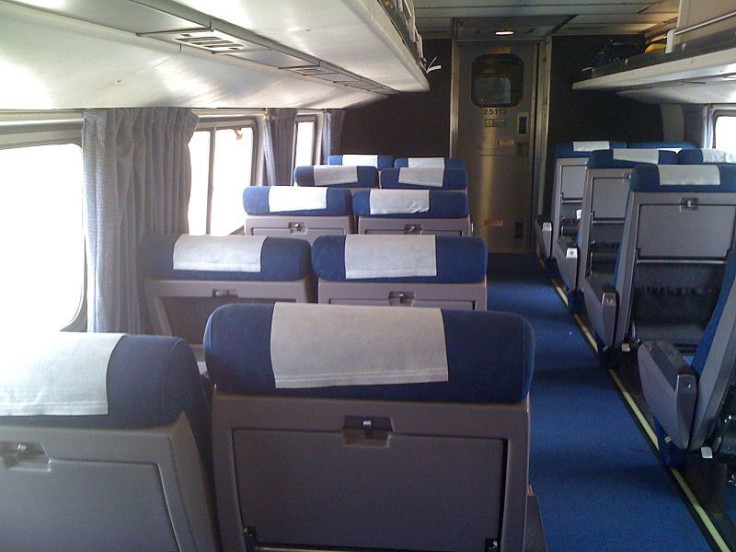
Amtrak turns 42 years old Wednesday. The National Railroad Passenger Corporation was brought into existence under the administration of President Richard Nixon. Prior to 1971, passenger rail service was run through a multitude of different railroad companies. Many of the routes in use today over Amtrak's 21,000 miles of track existed back then, just under a different name.
The famous Pullman Company ceased to exist shortly prior to Amtrak's inception. After that, Penn Central went defunct. The latter was extremely important to a large swath of the American population, as most lines running northeast from Washington and Philadelphia into the New England states were Penn Central lines. Indeed today, SEPTA's Suburban Station in Philadelphia is commonly called "Penn Center".
Believing the end was near for the American institution that is rail travel, the government sought to prevent the collapse by conglomerating numerous rail companies. Today's Amtrak is publicly funded but operates as a for-profit organization. This is a sticking point for many who use the system every week.
The average trip from Washington to Philadelphia can cost upwards of $100 per person to ride in coach, more than 50 percent more to ride the Acela express service offered by Amtrak along its Northeast Regional Line from the Washington's Union Station to Boston. Conversely, the cost of driving the I-95 corridor is much less than that amount, despite the increasing toll amounts throughout each of the states encountered.
On the event of Amtrak's birthday, CEO Joe Boardman called the railroad "underfunded", and asked for even more funding from Congress. Fiscal hawks on Capitol Hill balked at Boardman's notion that the for-profit enterprise needed more financial assistance outside what passengers pay to ride and what the government already gives Amtrak.
Similar to the United States Post Office, Amtrak offers a near monopoly over inter-city rail travel throughout the United States, as the USPS does with postal mail. While FedEx and UPS are able to operate through the legal loopholes surrounding parcels and the like, the Postal Service has full rights to postal mail.
In turn, Amtrak operates unopposed throughout much of the United States. There are a few exceptions however. In the northeast, NJ Transit operates the "Northeast Corridor" line from Penn Station in Manhattan to Trenton Transit Center. Likewise, Amtrak runs the same route, with less stops. A look at the American rail system shows that outside of a break in intracity transit in suburban Maryland, between Newark, Del. and Perryville, Md., if a traveler really wanted to, they could skip using Amtrak from Boston, Mass. to Fredericksburg, Va. using only local or regional rail transit. SEPTA's "R2" Line from Philadelphia ends at Newark, Del. or Wilmington depending on the run so the distance could vary.
However, Amtrak has changed the face of American rail travel, but still left behind the vestiges of the old days. "Union Stations" exist all across the United States. They were named to denote the fact passengers could use a 'union' station to connect from one railroad company to another, prior to Amtrak's existence. In Washington, D.C., Union Station connects Amtrak's Cardinal Line to Ohio and Chicago, formerly a unique rail line likely connected to the real-life "B&O" (Baltimore & Ohio), with lines to Newport News, Va., Miami, and New York. Each formerly existed as a different line.
In Pennsylvania, rail travel was the best way to go for many in rural parts of the state. However, the only reminder of what once was is the numerous "Rails-To-Trails" projects throughout the commonwealth, denoting where passenger trains once ran. The Reading Railroad later merged into Conrail, and many passenger lines went defunct or were converted to freight lines. From Pottsville to Philadelphia, the Schuylkill Branch of the Pennsylvania Railroad is only operational as far as Norristown, Pa., under the authority of the SEPTA, Philadelphia's transit system. The former Lehigh Valley Railroad is now partially Conrail property. Passenger lines from Allentown's defunct train station to Philadelphia have long since been gone. Visitors to the Statue of Liberty disembark in a defunct Jersey City, N.J. train station that still lists the numerous destinations once served by LVRR and other lines.
However, Amtrak still operates along a number of integral Pennsylvania Railroad and Reading Railroad lines. The aforementioned Northeast Regional and other Amtrak trains operate along the same route as commuter trains bound for Trenton, N.J., Newark, Del., and Thorndale, Pa.
Though, because of Amtrak's concentration on intercity rather than intracity rail travel, much of the nation's former railroad infrastructure has been left to slowly disappear. The former North Philadelphia 'union station' sits five miles from Amtrak's 30th Street Station in Philadelphia. Yet, the large passenger station sits boarded up, largely abandoned alongside its massive parking lot at the corner of Broad Street and Glenwood Avenue. Two Amtrak "Pennsylvanian" trains per day stop at the platform; one in either direction to and from New York. In its place, SEPTA operates Trenton, N.J. and Germantown, Pa.-bound service regularly throughout the day on that same platform and its adjacent one. Trenton-bound passengers pass through the same tunnels their ancestral Pennsylvania Railroad passengers did. Aging overhead signage directing passengers to the cities of "Trenton/New York/Boston" and "30th Street/Wilmington/Baltimore" are a reminder of those days.
Despite its current criticisms, Amtrak stands as a reminder to the importance that the nation's railroads have had on the development of the United States.
© 2025 Latin Times. All rights reserved. Do not reproduce without permission.



